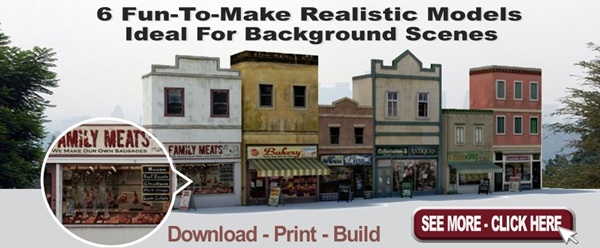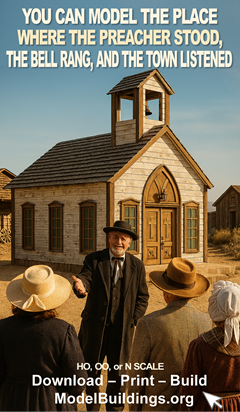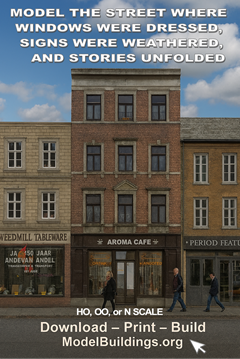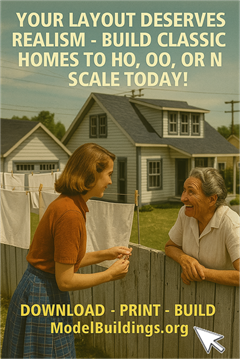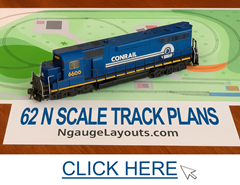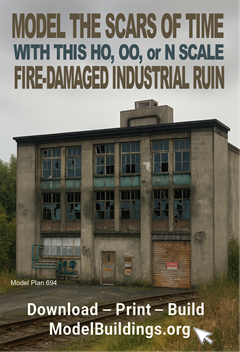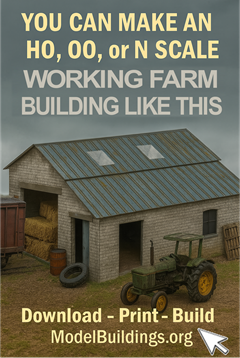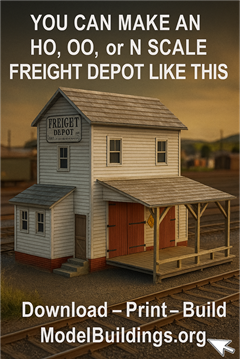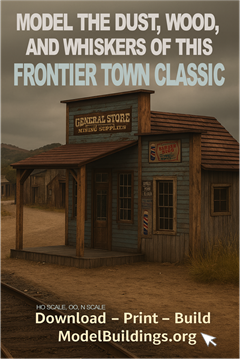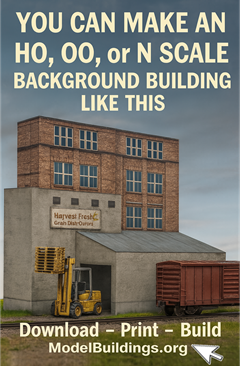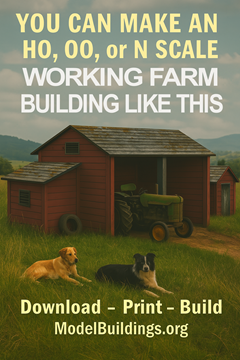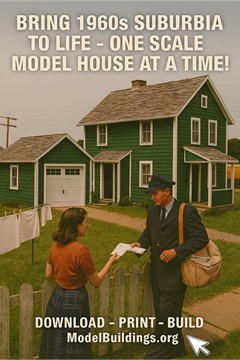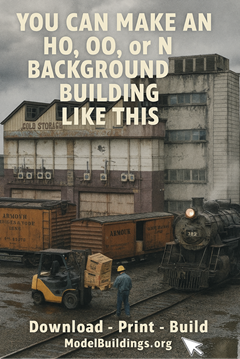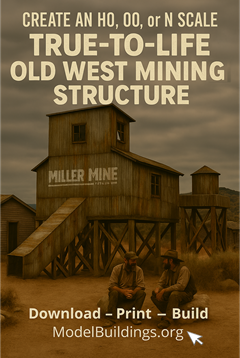Everything on model trains, model railroads, model railways, locomotives, model train layouts, scenery, wiring, DCC and more. Enjoy the world's best hobby... model railroading!
Is It Okay To Use Pecos Code 075?
Nigel writes I am into DCC and my question is:
“Can anyone help me out? I do have all ‘Peco code 100 tracks {curves, straight & point} and I also have code 075-Double/Single Slip Crossings; And I want to know, with some of my old polling stock, will this be all right with Pecos code 075? Or will the deep wheel flange on the old stock cause derailments? They also do Electrofrog long crossings And Insulfrog crossing in code 075. I have one Insulfrog Crossing in code 100”
Just a reminder to all readers that you can have your question published by using one of the ASK A QUESTION links under each post.
Electrical Pickup Troubles with Baldwin Modern 440 Locomotive
Martin asks for help:
“I am having electrical pickup troubles with my Baldwin Modern 440. The tender sound will work when I disconnect the tender and pins from the loco, that is until I touch the tender or attempt to move it. The sound sometimes works when I fidget with the tender. I don’t know what to do.”
Free Train Room Signs
Download your FREE train room signs from https://www.modelbuildings.org
You’ll find the link in the Railroad Resources Category in the top NAV bar on the website.
Workable Grade For Lionel Engines
Mason posted:
“I have a work area of around 16 foot by 6 foot and plan for 2 levels with my trains operating on both. I am thinking of 6″ to 8″ between the two levels, so am wondering what grade and how many inches of track would look and work best. I don’t want to waste space, but still want it to look natural and not cramped. Plus any tips on figuring the riser heights as they step up the ladder would be a help. Thanks in advance.”
Adding DCC Sound to a GP30 Diesel
Allan writes:
“I have a GP30 Diesel that is a few years old but has DCC onboard. I thought about converting it to DCC sound. Looking at the engine I’m not convinced adding a speaker is feasible without a complete disassemble and removal of parts from the frame halves? Has anyone attempted this before?”
Add your answer or comment below. Click COMMENTS to see what others have to say.
Separating Glued Plastic Parts
An unusual question from Rick who has OO trains:
“I have recently bought used Triang/Hornby hopper bridge parts. Unfortunately, the two R85 supports that I want had been glued to the bridge. I have no idea what type of glue has been used. I have read methods of unglueing including deep freezing for a few hours before prying apart, but I would welcome comments only from anyone who has attempted to separate R85s from R82 – successfully or failed, please. My model is chilling out in my freezer while I await replies with bated breath.”
Understanding CV Addresses and Values
Mickey models HO and his question is:
“I am just having trouble understanding CVs. I have a passenger train with both working engines at either end. I would love some advice please? I have another 2 that start up but don’t move.”
Applying an Air Brush Primer Coat
Mel asks:
“I’m not very experienced using an air brush. Does any brand make primer for use in an airbrush?”
Can Kato Unitrack Be Used With Other Track Brands?
John S writes:
“Before I buy stuff for my planned N gauge railway I want to check if Kato Unitrack can be used with other track brands like Atlas? I know Unitrack is quite expensive and a bit plastic in look, but it sounds pretty durable and foolproof. Any comments if you have used it and can the plastic look be easily disguised?”
Add your questions, comments, or answers below using the ASK A QUESTION or COMMENTS link.
Old S scale American Flyer Needs Cleaning – How?
Reece is hoping for help with this question:
“I inherited an old S scale American Flyer set which looks like about 50+ years old. It is a Missouri Pacific set with 6 cars. I haven’t run it yet and am hoping all the dust that covers the cars won’t result in running issues. If so, I will just keep it in the original box or use the cars for staging. Is there a way to remove the dust without causing damage?”
You can submit your own question using the ASK A QUESTION link below, or COMMENT on this post using the COMMENTS link below.
Calculating Grades – Graphic to share with friends
Model railroad grades are expressed as a percentage by dividing the rise over the run.
For example, a 3″ rise in 100″ run of model railroad track is 3% (3/100). Put another way, if you have 100 inches of track and your train climbs one inch, then your grade is 1 percent. When 25 inches of trackage rises 1 inch, your grade would be 4 percent. However, be aware your track will need to transition from the flat level to the gradient and back (see graphic). This will add to the run needed for your given gradient.
Real-world railroads might have three grade classifications: 0.8 percent to 1 percent which is considered ‘light grade’; 1 percent to 1.8 percent would be ‘heavy grade’; and anything steeper than 1.8 percent would be ‘mountain grade’ track. Real railroads operate for efficiency, whereas visual aesthetics are factors to consider on model railroads.
On a model railroad, grades can be used to enable more movements in a smaller space, and to make a train layout more visually appealing. Having a train pass on a track over another on a bridge can look particularly impressive. Even though grades on model train layouts are often steeper than on real railroads, grades greater than 2% can still pose problems. If you are using tight radius curves that can compound grades. Where possible, grades are best kept below 3%, however, some layout can and do accommodate steeper grades.
Grades on model railroads are generally steeper because, unlike on a real railroad where very long trains operate, there isn’t usually enough space to replicate a gradual gradient of several miles. However, the same principles need to be considered: the weight of your locomotive, the power of your locomotive, along with the weight and number of cars in your trains. A weak loco won’t be capable of pulling many cars up a grade. The steeper the grade is, the harder it will be. The greater the weight, the greater the traction… which means the wheels on your lighter locomotives could slip on grades that heavier locomotives can climb. Another thing to be aware of is that larger-scale locos will generally cope with steep grades better than smaller loco scales. As an example, a powerful N scale locomotive might pull around 14 to 16 cars up a 4 percent grade. Some train enthusiasts might think 14 to 16 cars is too short a train consist.
Feel free to share this graphic with friends, on Facebook, or on your website if you think it will be of help.
Insulated Track Connections
Gary has an O scale question:
“I am using insulated track sections. What are the connections for crossing gate and lights? I hope you can offer advice.”
How to Cut Fastrack
Mike models O scale and asks:
“I am making a lift out bridge and would like to know the best way to cut fastrack please?”
Can Couplers Be Used Universal Together?
Gavin is starting out in N scale and asks those in the know:
“Although I have enough space for a small HO layout I am going N scale instead. It will allow me to pack more train movements and scenery in the same space. I’m starting out with a Kato locomotive because they’re well detailed. My question… Will a Kato loco couple with other brand cars in particular Micro-Trains and Accurate, or will I need to stick with Kato?
Car Capacity for Industries and Yards
Warren posted this question:
“I’m planning on extending the ‘L” part to my HO layout bringing the end size to 10ft x 6ft L shaped. The bulk of the extension will be for my new yard but I don’t want to have it bigger than it needs to be for efficient operation. I would be interested in feedback on suggested car capacity because I don’t want it too congested. I have about 25% capacity in my industries if that helps.”
Add a comment under this post if you can assist Warren.
Painting Brass Bumpers
Michael C posted this question:
“Can I paint brass bumpers with acrylics or do I need oil-based paints or something else? Is there any special prep needed before painting?
Hornby X9850 X9871 Instructions
Bill asks:
“Does anyone know where to get instructions for the fitting of a Hornby X9850 X9871? HST lighting (Virgin) that Hornby supply. I have been unable to get help from Hornby and the supplier cannot help either. Help!!”
Types of Flex Track
Mike M asks:
“Hello, I really hope you can help me with a couple of quick questions. Will a HO Marklin coal tipper fit on a flexible HO track? Also, is there a flexible HO track that is a little taller than what you usually get at hobby stores? I have a very old tin plate made in japan train that will not run on my HO tracks. The wheel flanges are a little too big so it hits the cross ties. Thanks for your time! I am not a model train expert and am having trouble finding answers for a HO train project I’m working on.”
